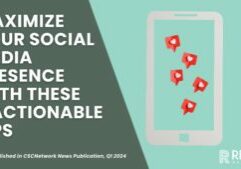The Power of User Experience: How Great UX Increases Conversion Rates
Today, more and more web marketers are placing an emphasis on a user’s experience. In fact, it’s reached the point where the phrase “user experience” has become tossed around so much that the meaning is getting lost in translation. However, knowing how to improve the user experience for your website is a whole other undertaking.
Since we believe the website is your 24/7 salesperson and the hub of your business, we are one of the many web marketers that emphasize user experience when redesigning websites.
Understanding what user experience means and its usefulness is vital for any website owner. It’s one of the main things that determines the success of a website and in today’s world, perhaps a business.
What is User Experience?
Before we get into the nitty gritty, we first need to define what user experience is. User experience (UX) encompasses all aspects of a user's interaction with a website.
In simple terms, best practices for UX focus on making a website easy-to-use and appealing to consumers. Some key features of good website UX include:
- Design
- Navigation (both desktop and mobile)
- Functionality
- Usefulness of content, images, and media
- Efficiency
- Memorability, and so much more
The Stats Behind the Case for Great UX
Businesses benefit immensely when they have good UX on their website. This is because UX significantly affects conversion rates.
Think about it; how likely are you to fill out a form, or call a phone number on a website, if the design is distracting? If the page loads slowly? In fact, many studies reflect this line of thinking:
- Studies estimate that over 55% of visitors spend less than 15 seconds on a website. The average page visit lasts less than a minute, and users often leave web pages in just 10-20 seconds. (HubSpot)
- Approximately 40% of people exit websites that load slowly. (Forbes)
- Studies indicate that 94% of users who distrust a website do so because of its design. (HubSpot)
Ultimately, users want the ability to easily find the information or content they desire. If your website is easy to navigate, quick to load, with a cohesive design incorporated throughout, your business is far more likely to convert users to leads.
The Top Benefits of Great UX
Having a website with a great UX brings many benefits to both owners and users alike. To put it simply, UX is important because it aims to fulfill the user’s needs.
The top benefits of a great website UX include, but aren’t limited to:
1. Increased Conversion Rates
When the overall experience of using a website is positive, users are more likely to complete the desired action of a page, such as making a purchase, scheduling an appointment, filling out a form, or subscribing to a mailing list.
In fact, one of our clients, Lemon Fresh Bins, saw over a 15% increase in service requests in a little less than 5 months.
2. Reduced Bounce Rates
Websites with poor UX tend to have high bounce rates, as users are unable to complete their objectives and leave the site. High bounce rates is typically a good indicator that the UX of a website should be re-evaluated.
3. Increased Customer Loyalty
Good UX = happy customers. Users are more likely to share and return to a website that they have had a positive experience on, leading to both new and returning customers.
4. Increased Return on Investment (ROI)
A well-designed and thought-out UX leads to higher user engagement, which can mean an increased number of purchases or increased number of leads for your organization.
How to Improve User Experience for Your Website
It may seem like a tall feat to undertake improving your website’s UX. The good news is that there’s no shortage of ways you can enhance the user experience!
Below are some of our top tips for improving your website’s usability:
1. Optimize the Design
Websites with a clean design that are easy to navigate drastically improve the UX.
2. Improve Speed
Websites that are bogged down with slow loading time drive users away. It’s best practice for a website to load within 0-3 seconds. Anything above 3 seconds increases the likelihood of visitors leaving your site, aka your bounce rate.
3. High-Quality Content
Having content on your website that resonates with your customers, is error-free, and concise, is critical to the user experience.
4. Clear Calls To Action (CTAs)
Websites with easily identifiable, clear calls to action will help drive users to convert.
5. Test and Adjust
Improving a website's user experience is never over. Continuously monitoring, testing, and making improvements on your website based on user feedback can help improve your UX.
Conclusion
Today, website UX matters more than ever. Websites with good UX—including optimized design, easy navigation, high-quality content, and clear calls to action—benefit from increased conversion rates and better ROI. If you’re not getting the maximum benefit from your website or need your website’s UX improved, let’s chat!
Check out our portfolio of work, or learn more about our approach to web design and development.










